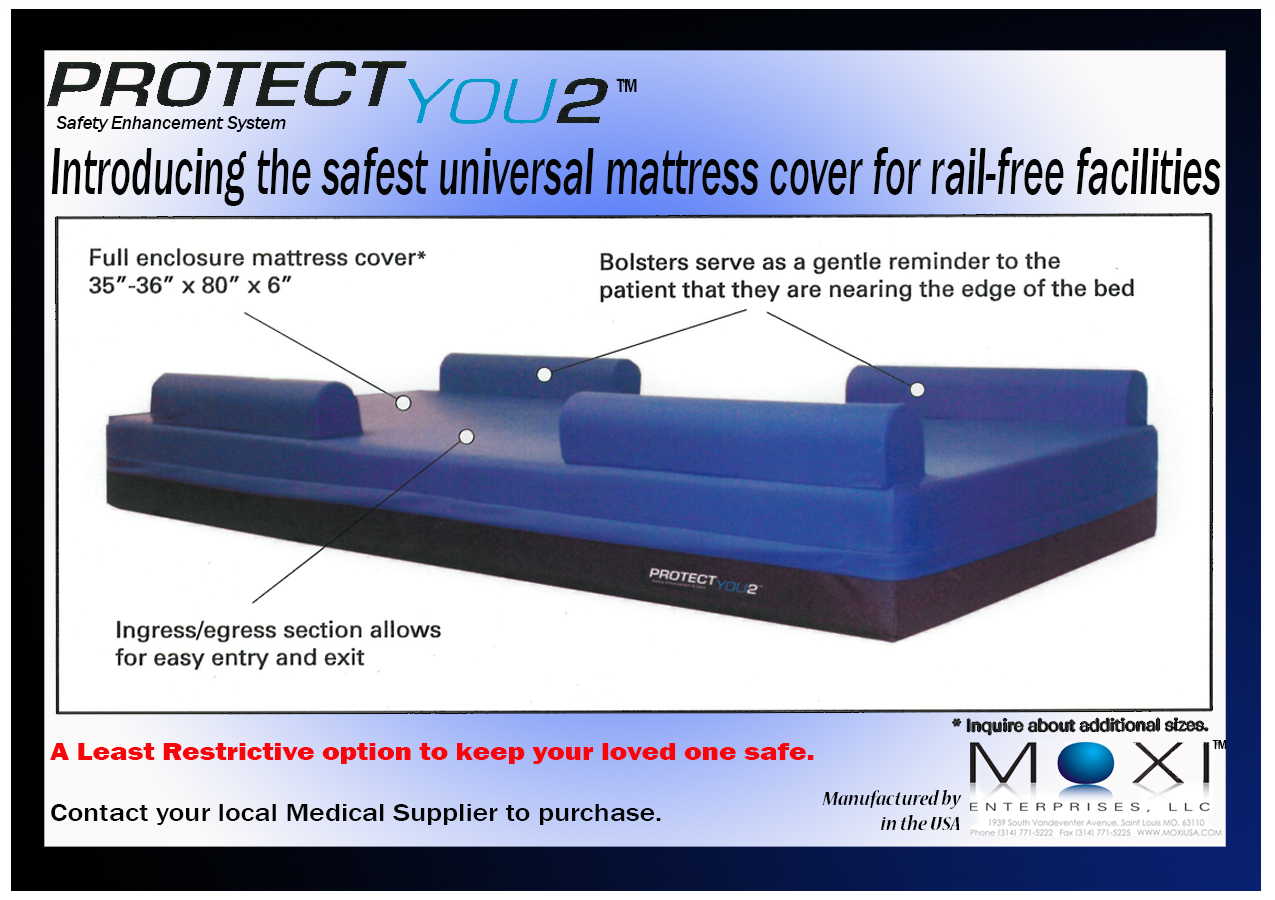
Least Restrictive: Restraints vs Bed Falls
Falling is a very serious concern for people at any age. For seniors; the worry over a fall may encompass every part of their life as an injury from a fall can lead to a decline in mobility and function, even death. “Between 1985 and January 1, 2009; 803 incidents of patients (resident of a nursing home, any individual receiving services in a home care setting, or patients in hospitals) caught, trapped, entangled, or strangled in beds with rails were reported to the U.S. Food and Drug Administration. Of these reports, 480 people died, 138 had a nonfatal injury, and 185 were not injured because staff intervened. Most patients were frail, elderly or confused”. (1)
As falling from a bed is one of the most common falls for patients and the elderly, finding methods to limit falling from a bed without restraining or inhibiting important, functional, mobility is critical. From disorientation when waking up or trying to get out of bed to rolling over the edge while asleep; a fall out of bed is equal to and holds all the risks of any other type of fall at any age.
There are many products designed to help protect our loved ones from failing out of bed. The most common product is the bed rail, also known as side rails. There are various types and sizes on the market today but they have one thing in common: entrapment.
Within the movement towards a least restrictive environment, companies have been pushing the idea that bed rails are an excellent option. The patient or elderly user would no longer need to be tied or strapped down to the bed if there were bed rails being used. The bed rails would also prevent the patient or elderly user from rolling or getting out of bed.
Unfortunately, data from the Consumer Product Safety Commission reports between January 2003-Sept 2012, 155 deaths were due to bed rails in addition to almost 37,000 bed rail related injuries treated at hospital emergency room between 2003-2011. (2)
The debate between the use or non-use of restraints is ongoing and there are risks to consider when using or not using restraints. General research beginning in the 1980’s suggested some risks when using restraints may include: strangulation, loss of muscle tone, pressure sores, decreased mobility, agitation, reduced bone mass, frustration, loss of dignity, incontinence, and/or constipation. The other side of this debate is the risk of falls when restraints are not used. (3)
The FDA states, “Most patients can be in bed safely without bed rails.”(1) Some options available are:
• Use beds that can be raised and lowered close to the floor to accommodate both patient and health care worker needs and keep the bed in the lowest position with wheels locked.
• When the patient is at risk of falling out of bed, place mats next to the bed, as long as this does not create a greater risk of accident.
• Use transfer or mobility aids.
• Anticipate the reasons patients get out of bed such as hunger, thirst, going to the bathroom, restlessness and pain; meet these needs by offering food and fluids, scheduling ample toileting, and providing calming interventions and pain relief.
• Use a proper size mattress or mattress with raised foam edges to prevent patients from being trapped between the mattress and rail.
MOXI Enterprises manufactures a non-restraint option; a universal bolster cover called the Protect You 2. It is the safest, non-restraint, universal mattress cover for rail free facilities. This is a full enclosure cover designed to fit most standard size mattresses with a voluntary ingress/egress bolster sections to address rolling concerns. The cover is fluid resistant, anti-microbial, easy to wipe down, and meets CAL 117/CFR 16 Part 1632 flame retardant standards.
Open communication and education between families and staff to assess and assure the least restrictive environment has to be considered and what is needed for all involved to become comfortable with new options available today.
Bibliography
(1) https://www.fda.gov/medicaldevices/productsandmedicalprocedures/generalhospitaldevicesandsupplies/hospitalbeds/ucm123676.htm FDA US Food & Drug Administration October 2000, Revised April 2010, Updated December 2017
(2) http://theconsumervoice.org/uploads/files/issues/ConsumerVoiceBriefBedRails.pdf National Consumer Voice for Quality Long-Term Care, Washington DC
(3) http://www.health.state.mn.us/divs/fpc/safety.htm Department of Health Minnesota, Health Regulation Division Revised December 2001
Additional Information:
https://www.fda.gov/MedicalDevices/ProductsandMedicalProcedures/HomeHealthandConsumer/ConsumerProducts/BedRailSafety/ucm362832.htm
http://www.health.state.mn.us/divs/fpc/safety.htm